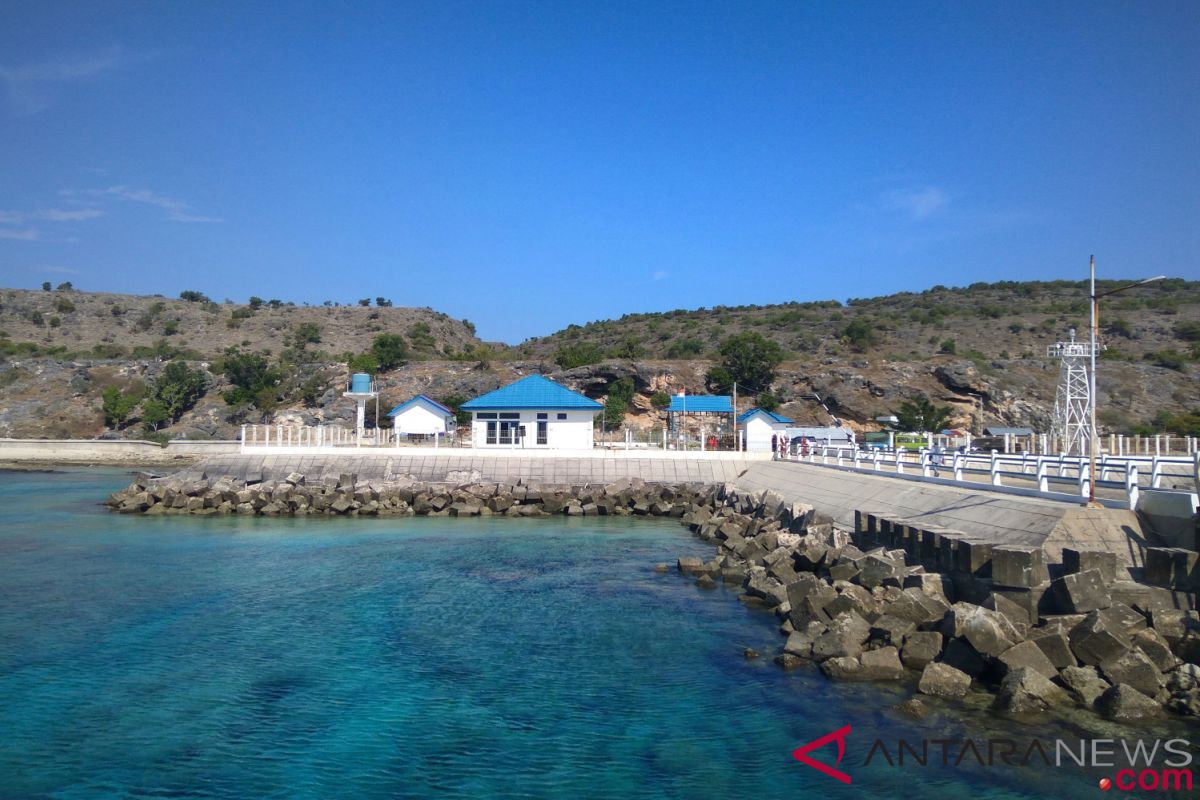The cultural heritage in Kisar is not only a legacy for the local community, but also as part of the richness of the Indonesian culture and civilization that has to be protected and preserved.
For a long time, Kisar Island has become the focus of attention of archeologists in the country and abroad who had carried out research on rock art with prehistoric paintings since 2014.
Prehistoric rock art is found in many caves that are spread throughout most of the island of Kisar, whose number is much more than those found in other 15 leading, outermost and lagging islands in Maluku Province.
It turns out that Kisar has a variety of historical and cultural relics, ranging from prehistoric rock art in the form of paintings, old houses, colonial fortresses, statues and "lutur" (stone fences) as the sign of past dwellings.
Kisar Island has been inhabited by humans for more than 15 thousand years, according to Dr. Mahirta, an archeologist of Gajah Mada University (UGM) in Yogyakarta.
"The results of analysis of a number of ancient objects found in Kisar indicated that some 15 thousand years ago, its Posi coastal area was inhabited by people," he remarked in Southernmost Islands Sub-district town of Wonrely in Kisar recently.
Mahirta is an active researcher in archeology and a lecturer at UGM. He has long been studying rock art in the form of prehistoric paintings that are spread all over an area in Kisar Island.
Through a collaborative project between UGM and the Australian University (ANU), Mahirta and Prof. Sue O`Connor started research on rock art across Kisar Island from 2014 to 2017.
Mahirta is now in Kisar to help the North Maluku Cultural Heritage Preservation (BPCB) team to list historical and cultural sites, and objects that are available in the island, to be registered as national cultural reserves.
He said the existence of humans in prehistoric times in several caves in Kisar was proven by the discovery of fishing equipment in the form of hooks that are some 15 thousand years.
"In the early days of the Holocene, there was evidence that humans used more sophisticated equipment than stone tools at the time, namely the fishing hooks which were some 15 thousand years old," he noted.
Further, Mahirta added that rock art is another proof that ancient civilization existed on Kisar Island. The rock art in Kisar has specific motifs, but also are similar to several rock art types on other islands in Indonesia, Southeast Asia, Australia and the Western Pacific.
The rock art in Kisar, which has similarities with other regions, is a painting of handprints, arms, human-colored paintings, and many others with natural, abstract or symbolic varieties.
In addition to these, the human motifs and symbolic motifs that have a connection with those that exist in nekara (bronze drum) and moko (copper drum), and also seen on the Kisar woven fabric, showed the production of rock art on Kisar Island continued until two thousand to 2,500 years ago.
"There is a possibility that hand-stamp paintings in Kisar are more than 15 thousand years, so our research will continue to confirm it," Mahirta stated.
Rock art in Kisar, he remarked, is not only found in caves but also on large rocks, such as that in the Abusur rock hill complex, which is not far from Kisar port.
He stressed most of the prehistoric paintings are still in good condition, and have not been desecrated by acts of vandalism, but some in the coastal areas are threatened by mining activities of the local people.
In the meantime, Idham Bachtiar Setiadi, a member of the National Cultural Heritage expert team, explained that Law No. 11 of 2010 concerning Cultural Heritage clearly regulates the protection and development of cultural heritage, including its use as a tourist attraction by the government and the communities where the cultural and historical sites are located.
"European countries are competing to find cultural heritage to show their oldest civilization. Indonesia also has its old, and the people of Kisar, this small island, also has a selling power based on its history and culture," Setiadi remarked in Wonreli.
Surya Helmi, another national cultural heritage expert team, explained that a site was designated as a cultural preserve based on a regent and local governor`s decree, as well as a recommendation letter from a team of experts in cultural heritage in the area.
Because the Southwest Maluku District does not yet have a cultural heritage review team, the national cultural heritage expert team can submit recommendations regarding the establishment of cultural heritage in the region.
Editing by Yosep Haryadi
Reporter: Otniel Tamindael
Editor: Suharto
Copyright © ANTARA 2018












